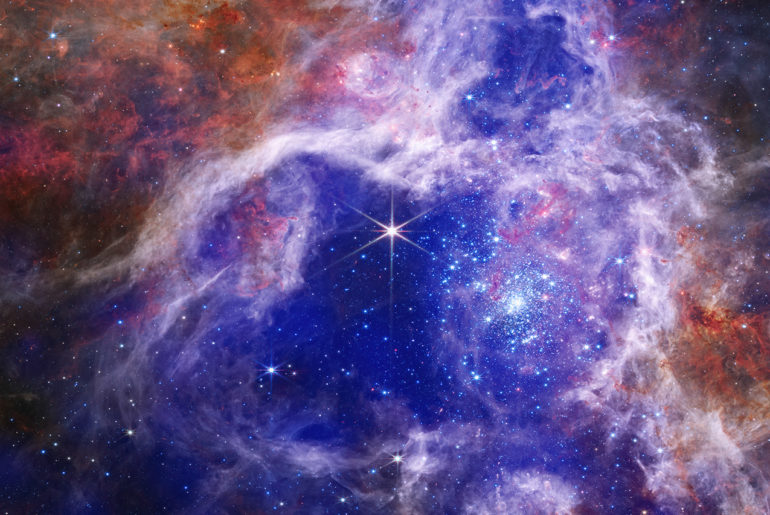
You’ve heard JWST images turned into sound, now check out an image of the Tarantula Nebula, also known as 30 Doradus, created with NASA Chandra X-ray Observatory data and an infrared image from the James Webb Space Telescope. The X-rays appear as royal blue and purple, revealing gas that has been heated to millions of degrees by shock waves, similar to sonic booms, generated by the winds from massive stars.

Now the infrared data from the James Webb Space Telescope appear as red, orange, green, and light blue, showcasing cooler gases that provide the raw ingredients for future stars. JWST’s view also uncovers ‘protostars,’ or stars in their infancy, just starting their stellar engines. What most don’t realize is that the chemical composition of 30 Doradus differs from most of nebula found in the Milky Way, as it represents the conditions in our galaxy that existed several billion years ago when stars were forming at a much faster pace than astronomers see today.
- BRIGHT, SHARP VIEWS ANYWHERE: Unlike many beginner telescopes, this quality refractor features fully coated glass lenses and a 70mm aperture for...
- PERFECT FIRST TELESCOPE FOR BEGINNERS: Designed for adults and kids to enjoy together, this beginner-friendly telescope sets up in minutes and...
- EASY NO-TOOL SETUP: No complicated assembly or tools needed. The full-height tripod and telescope tube set up in seconds and pack neatly into the...
This, combined with its relative proximity and brightness, means that 30 Doradus provides scientists with an opportunity to learn more about how stars formed in our galaxy in the distant past,” said NASA.






